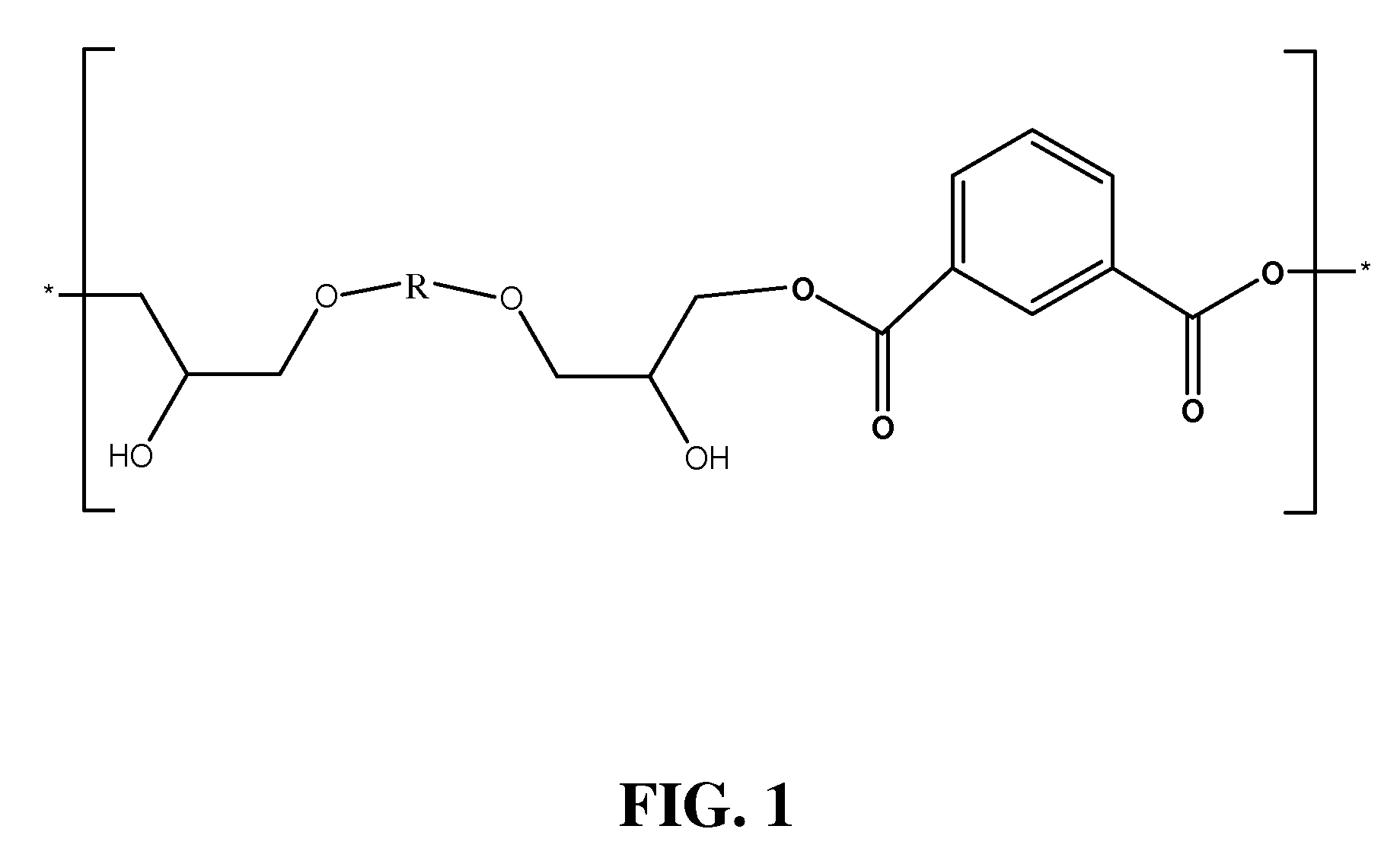Linear polyester resins and improved lithographic inks
a polyester resin and lithographic ink technology, applied in the field of linear polyester resins, can solve the problems of misting, poor image quality, excessive dot gain, and toning of lithographic inks, and achieve the effects of improving rheology characteristics, improving rheology characteristics, and widening water window values
- Summary
- Abstract
- Description
- Claims
- Application Information
AI Technical Summary
Benefits of technology
Problems solved by technology
Method used
Image
Examples
examples
[0090]Provided below is a description of each of the inventive linear polyester resins according to the present invention with a molecular weight less than about 20,000.
example a
[0091]Polyester—Dow DER 331, an epoxidized bisphenol-A monomer (266 g) and sebacic acid (82 g) were added to a 1-L resin kettle. GPTA (350 g) was added as the reaction solvent and MEHQ and BHT were added as free radical inhibitors 0.5-1 wt %. Triphenyl phosphine (TPP) (2 g) was added to promote the coupling reaction. The reaction was heated to 110-120° C. for 10 hours after which time the clear solution was filtered into a dark glass bottle. The acid number was <0.2.
example b
[0092]Polyester—DER 331 (307 g) and sebacic acid (71 g) were added to a 1 L resin kettle with EoTMPTA (290 g) as the reaction solvent. BHT, MEHQ were added as free radical inhibitors 0.5-1 wt %. TPP was added as a reaction promoter 0.4%. The reaction was run at 95-100° C. for 12 hrs and then 12 g acrylic acid was added to functionalize the secondary alcohol groups resulting from the ring opening of the epoxide groups. The clear solution was filtered into a dark glass jar and has an acid number of 0.81.
PUM
| Property | Measurement | Unit |
|---|---|---|
| particle size | aaaaa | aaaaa |
| OD | aaaaa | aaaaa |
| wt % | aaaaa | aaaaa |
Abstract
Description
Claims
Application Information
 Login to View More
Login to View More - R&D
- Intellectual Property
- Life Sciences
- Materials
- Tech Scout
- Unparalleled Data Quality
- Higher Quality Content
- 60% Fewer Hallucinations
Browse by: Latest US Patents, China's latest patents, Technical Efficacy Thesaurus, Application Domain, Technology Topic, Popular Technical Reports.
© 2025 PatSnap. All rights reserved.Legal|Privacy policy|Modern Slavery Act Transparency Statement|Sitemap|About US| Contact US: help@patsnap.com



